Abstract
Lead in blood was determined by atomic absorption spectrophotometry, using a wet ashing procedure and a procedure in which the proteins were precipitated with trichloroacetic acid. In both methods the lead was extracted into isobutylmethylketone before measurement, using ammonium pyrrolidine dithiocarbamate as chelator. The simpler precipitation procedure was shown to give results identical with those obtained with the ashing technique. In addition, blood specimens were examined by the precipitation method and by spectral analysis, which method includes wet ashing of the samples, with good agreement. All analyses were done on blood samples from `normal' persons or from lead-exposed workers, and no additions of inorganic lead were made. The relatively simple protein precipitation technique gave accurate results and is suitable for the large-scale control of lead-exposed workers.
Full text
PDF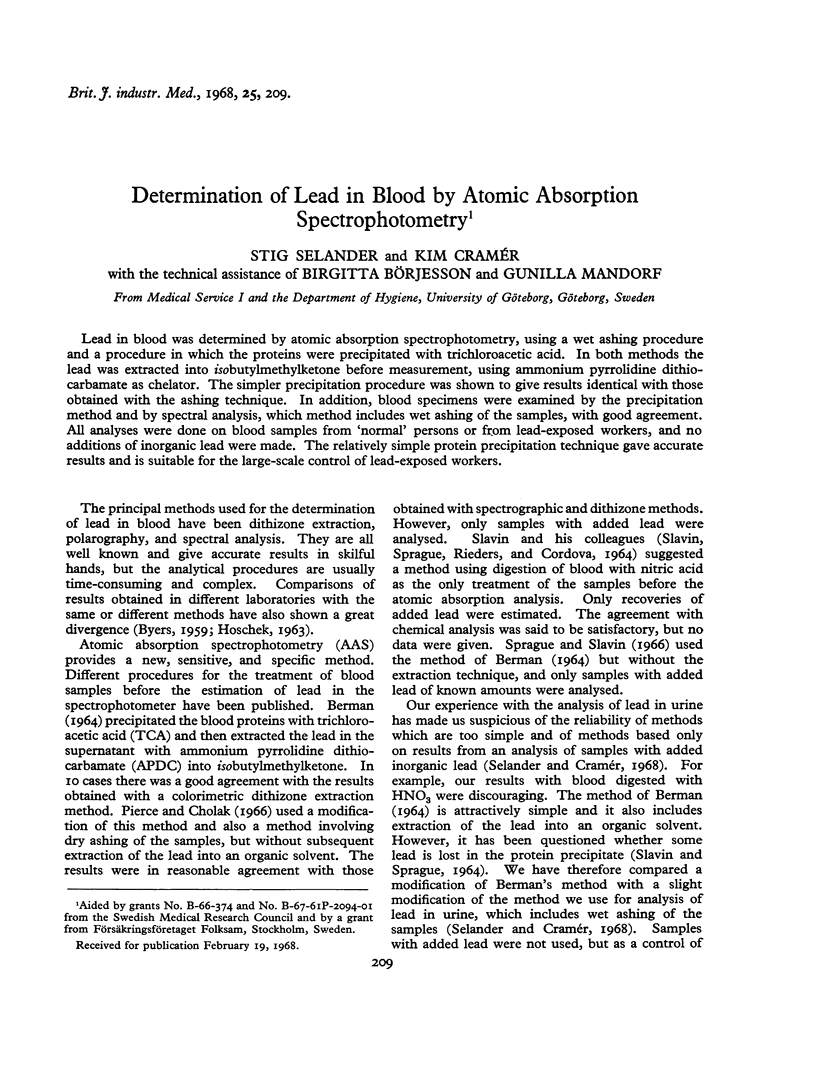
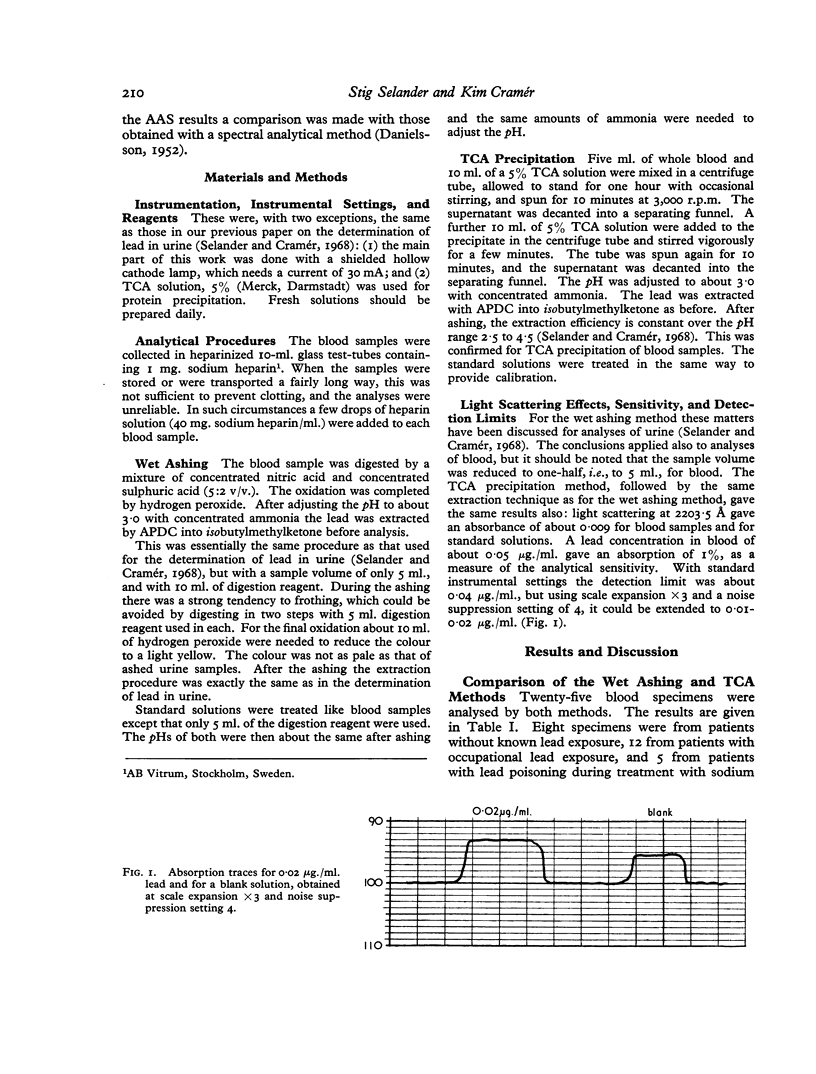
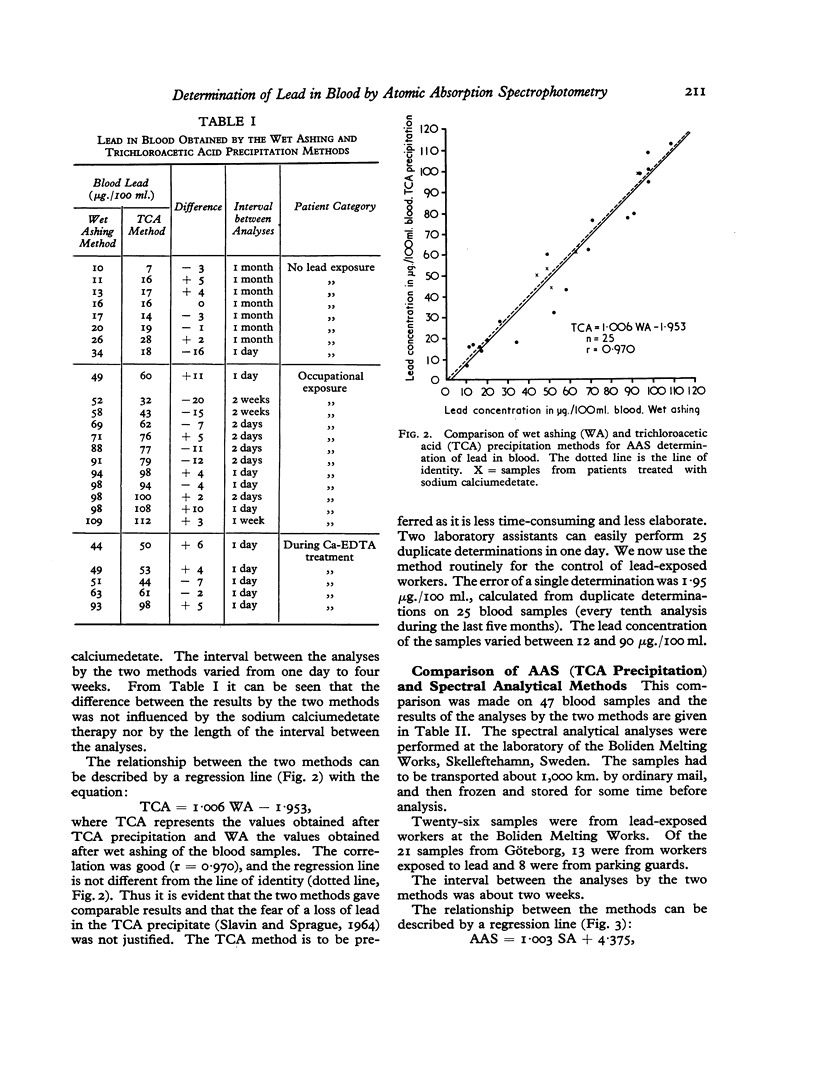
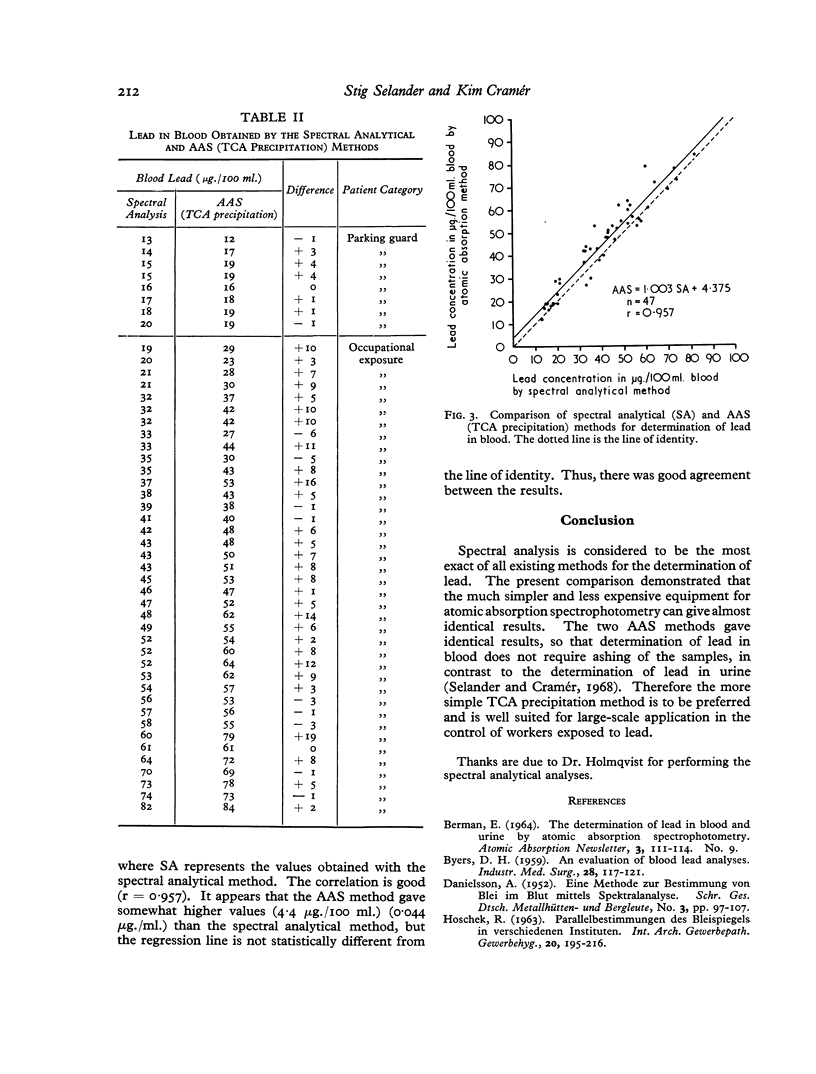
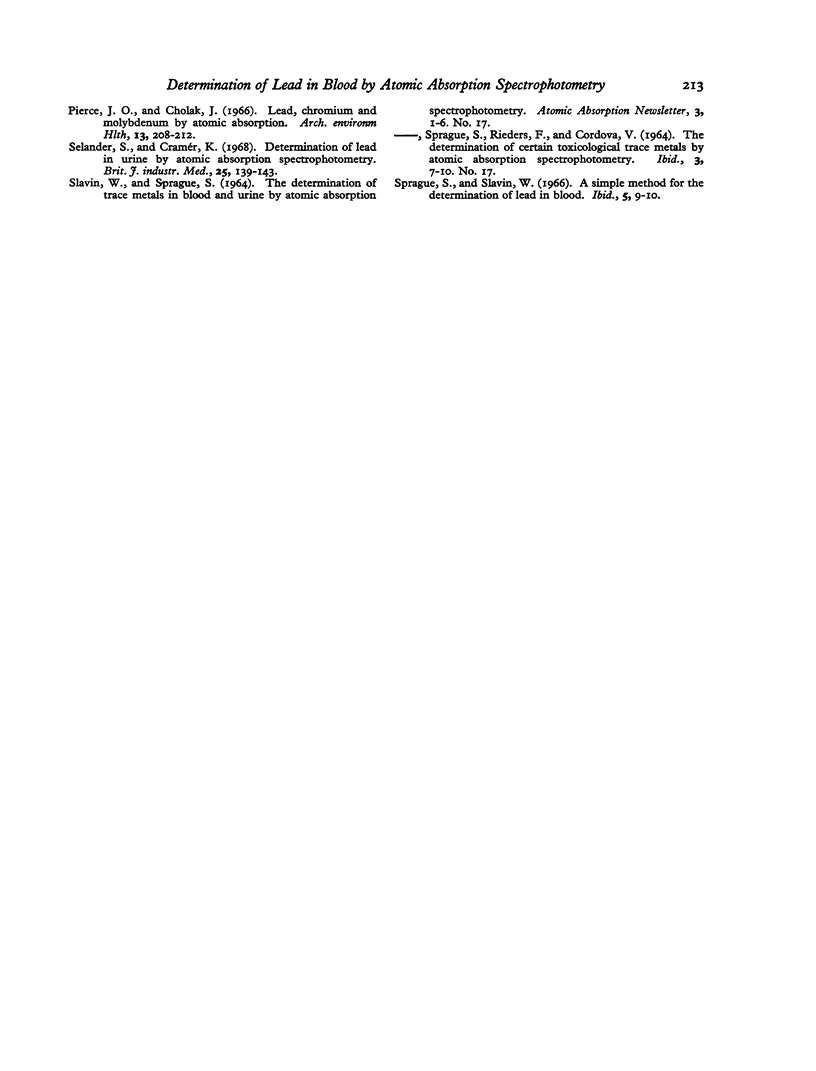
Selected References
These references are in PubMed. This may not be the complete list of references from this article.
- HOSCHEK R. [Parallel determinations of the lead level in different institutes]. Int Arch Gewerbepathol Gewerbehyg. 1963;20:195–216. [PubMed] [Google Scholar]
- Pierce J. O., Cholak J. Lead, chromium, and molybdenum by atomic absorption. Arch Environ Health. 1966 Aug;13(2):208–212. doi: 10.1080/00039896.1966.10664535. [DOI] [PubMed] [Google Scholar]
- Selander S., Cramér K. Determination of lead in urine by atomic absorption spectrophotometry. Br J Ind Med. 1968 Apr;25(2):139–143. doi: 10.1136/oem.25.2.139. [DOI] [PMC free article] [PubMed] [Google Scholar]


